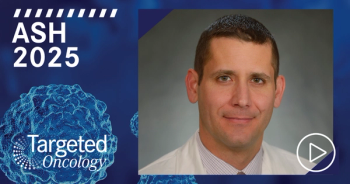
Advice to Community Oncologists Treating with Bispecifics and Unmet Needs in MM
Dr Shaji Kumar outlines advice for community oncologists and discusses unmet needs for treating patients with R/R multiple myeloma.
Episodes in this series

Transcript:
Shaji Kumar, MD: The main message would be that oncologists should be aware of the potential adverse effects, both short term and long term. I think we are going to be dealing with 2 situations. One obviously is very small community practices that cannot or do not have the infrastructure that allows them for close monitoring in the hospital. In that case, it might be better for those patients to be referred to a larger institution to at least get initiated on therapy for the first cycle or 2. Then potentially, these patients can come back and do community practice to get these drugs. I think the in-between approach is the larger community hospitals, where the facilities are accessible, and it’s a matter of the training and putting the logistics in place for these patients to be monitored in the hospital. Then, of course, larger facilities that are very well acquainted with these kinds of adverse events and have extensive experience with cellular therapy. Those sites probably already have the technology required for treating patients with this, in terms of both the outpatient and inpatient facilities.
The key message is to figure out which patients need the therapy. Identifying those patients who have had 4 or more lines of therapy and can benefit from teclistamab is important. The next step is making sure they go to the right setup so they can get started on this treatment. Once they’re on the treatment, it’s very important for us to be closely monitoring these patients for infections.
In terms of future challenges, as we already said, patients with myeloma continue to need new therapies. Thankfully, there are a lot of new treatments being developed both in terms of cellular therapies—not only chimeric antigen receptor T cells against different targets but also natural killer cells that are mortified to target the tumor cells. There are bispecific antibodies that are going after different targets, and trispecific antibodies are also being developed. In addition, there are targeted small molecules, including the cell ... or the venetoclax for patients with t11;14 translocation, as well as some new therapies being developed that are targeting the t4;14 translocations. Overall, there are a lot more effective global therapies, such as immunotherapy and more targeted therapies, going after specific subtypes of myeloma.
Transcript edited for clarity.









































